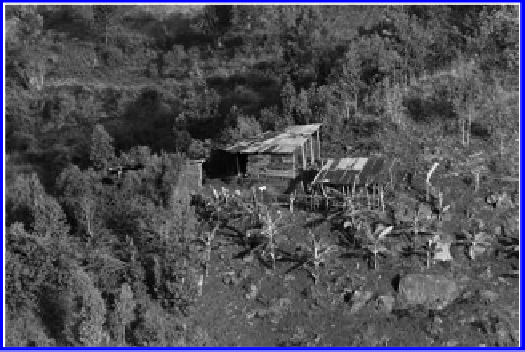Agriculture Reference
In-Depth Information
systems. This is especially true for production systems that require access to capital
and require technical skills to effectively implement at the farm level. Unemployment
and disease further complicate the situation and impede the adoption of conservation
production systems.
Many community and natural resources development scholars have advocated the
introduction of complex agricultural technologies as a means of addressing environ-
mental degradation of land and water resources within the tropics. El-Swaify and
Marten (2010) argue that such approaches will not be successful because farmers do
not possess requisite human skills or the capital to invest in such production systems.
They also note that suitable land is not available for use of technology-intensive
production approaches and that land tenure is not assured. They suggest that lack of
institutional structures to effectively address the barriers to adoption will ultimately
prevent widespread adoption of soil and water conservation production systems
within the tropics (Figure 15.5).
Each of the variables that El-Swaify and Marten (2010) have identified as
being barriers to adoption of soil and water conservation production systems in
the tropics is consistent with the traditional adoption diffusion model. Each of
the factors they observe as contributing to environmental degradation within the
tropics is closely aligned to those discussed in the diffusion literature as influenc-
ing adoption of innovations. Lack of human skills, lack of institutions to generate
new agricultural knowledge, lack of communication systems, inability of subsis-
tence farmers to assume risk, the culture of poverty that permeates the region,
and a host of other socioeconomic variables significantly influence the ability of
farmers to adopt conservation systems. These barriers make it very difficult to
motivate subsistence farmers to adopt soil conservation production systems even
when it would be in the best interests of individual farmers and society for them
to do so.
FIGURE 15.5
Steep slope farming near Pinantura, Ecuador. (Courtesy of Dr. Tom Stilwell.)

